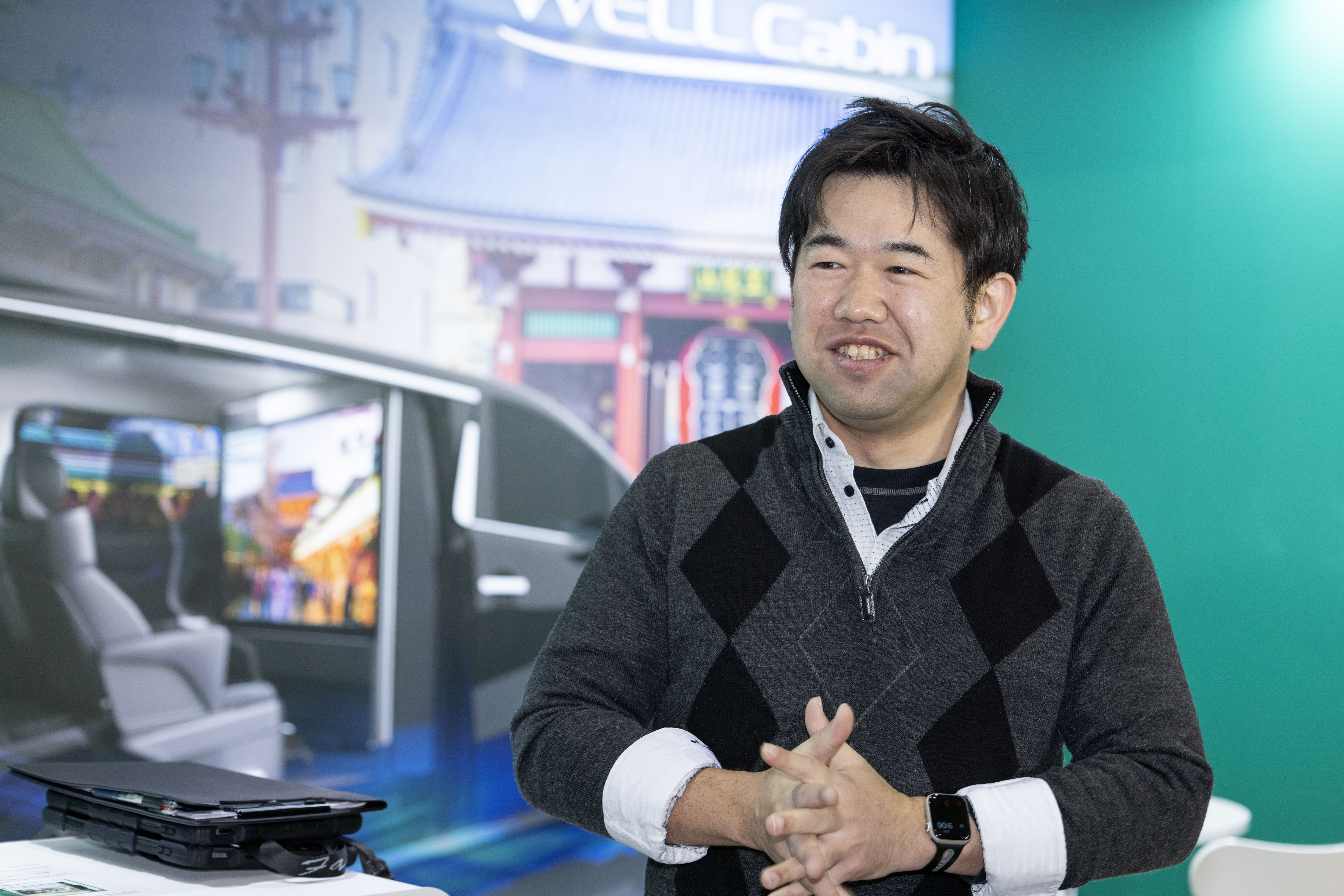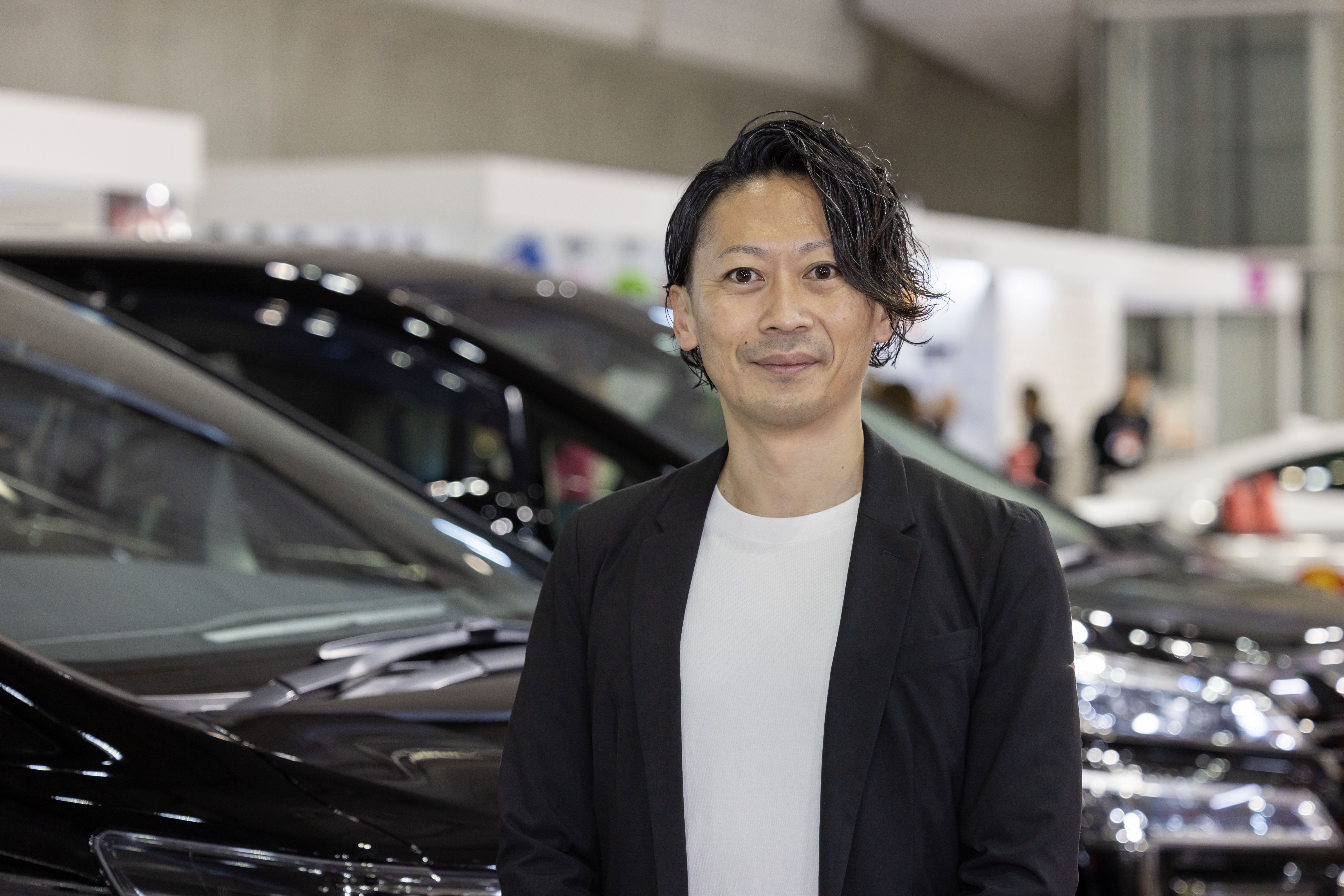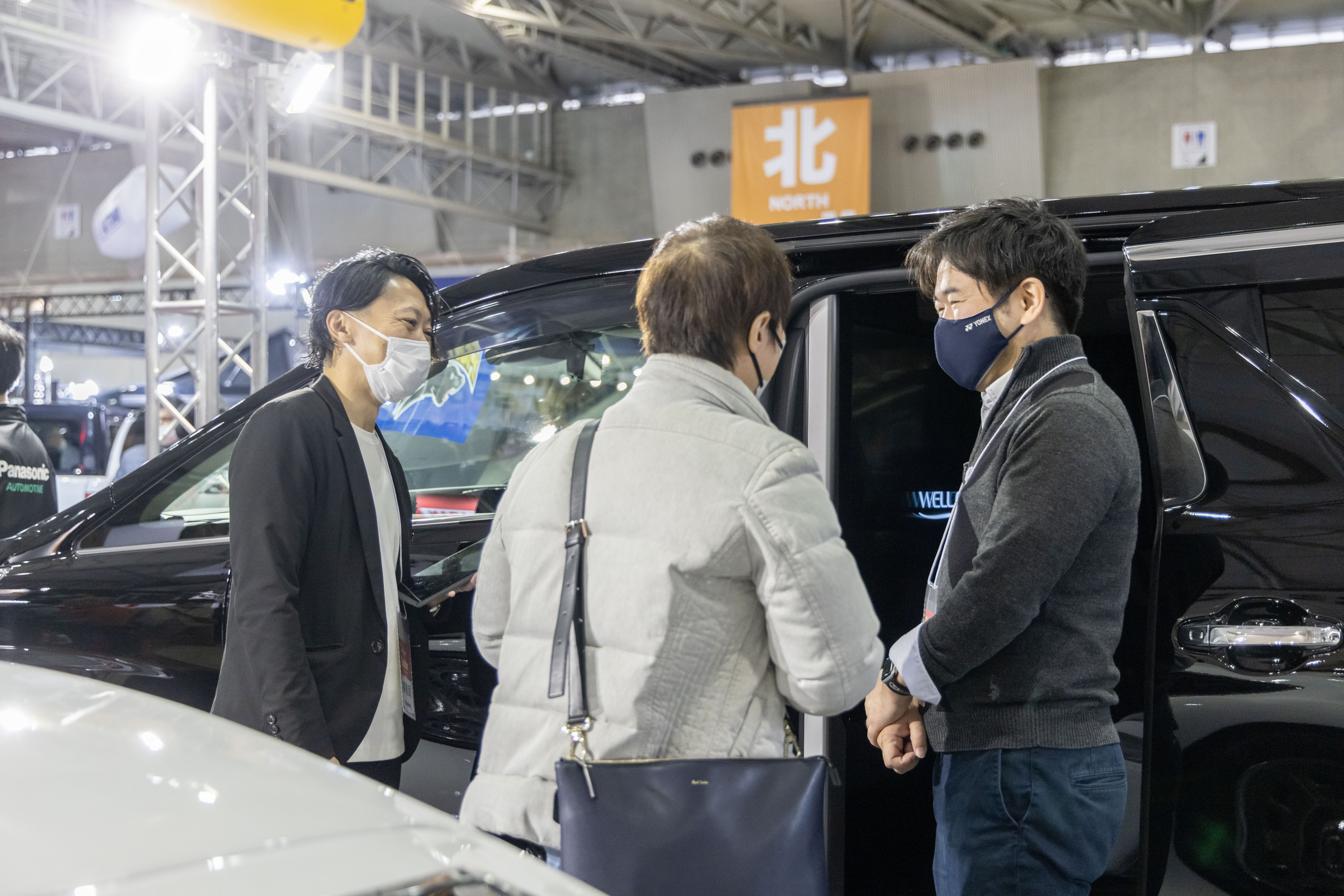Accelerating Commercialization: New Concept Proposals at Tokyo Auto Salon 2024
WELL Cabin Concept
Unveiling New Innovations at the World’s Largest Custom Car Event
Attracting 230,000 visitors over three days, Tokyo Auto Salon 2024 in Japan was the world’s largest custom car event. The event saw car manufacturers from around the world propose the future of cars while unique car stores competed in tuning and customization, filling the venue with the energy of car enthusiasts.
Panasonic Automotive Systems, Co., Ltd. (PAS) exhibited a booth at the event for the first time to present its new vehicle interior concept to the public. The event gave PAS the opportunity to explore the possibility of collaborating with other companies involved in the automobile industry and to directly feel the end-user’s response.

Good Response from the Experiential Value of Utilizing Audio-Visual Technology
PAS presented two concept cars that utilize Panasonic’s strength in Audio and Visual technology. Both concept cars featured hardware such as a large 55-inch transparent OLED display, 3D high-resolution audio system, vibrating seats, and scented diffuser. Original space control software for each concept was played back on the immersive large screens while high-quality sound and vibration created a realistic vehicle interior.



The first concept car was the WELL Cabin concept A, with business executives as its target users. For business executives who are required to make important decisions and assessments on a continuous basis, PAS proposed the car as a comfortable second office. The interior space was designed for relaxation as well as work efficiency.

The second concept car was the WELL Cabin concept B, which targets VIPs, including the rapidly increasing number of inbound travelers. By creating a high-quality interior space for transportation services to and from various destinations including sightseeing locations and sporting events, this concept offered an unprecedented sense of excitement through a space with high-quality hospitality.

At the PAS booth, approximately 500 people enjoyed the demonstrations of the concept car over the three-day event. On the first day, the Business Day, over 300 survey responses were obtained by inviting people from the passenger transport, tourism, and bodywork industries as potential collaboration partners. The demonstration received highly positive feedback from the majority of participants, with more than 90% of customers responding as being highly satisfied with the demo, and nearly 80% of responders want to use the service. In addition, more than 10 companies expressed a strong desire to collaborate with PAS. Media outlets were also highly interested in PAS’s proposals, and during the exhibition, PAS was interviewed by 23 representatives from 17 media outlets.
Based on the feedback and information obtained from industry professionals and end-users at the exhibition, PAS will accelerate the commercialization of the WELL Cabin concept.
Further Improving the Quality of Activities and Accelerating Commercialization
In this interview, we speak with the employees who created the concept car—from consideration of the idea to its construction.

Mr. Tsuchiya has experience in developing products for automobiles with display technology at the core. He spent five years in the U.S., where he was involved in product development of displays for U.S. and European car manufacturers. He undertook the challenge of materializing the WELL Cabin concept, a key theme for cabin-interior innovation solutions.

Mr. Tada is engaged in the development of new products and new businesses focusing on in-vehicle sensor devices and cockpit HMI. He took charge of product planning for commercialization of vehicle interior value from September 2023. As the general manager of Tokyo Auto Salon 2024, he also played a leadership role in the exhibition.

Mr. Yamasaki is engaged in software development and product planning for large-scale system products for corporations. From June 2023, he has been in charge of product planning centered on UX designs for the commercialization of vehicle interior value. He has worked hard to formulate the WELL Cabin concept, understand user needs, and incorporate them into the system.
Q. How was the response to your exhibit?
Tada: We were able to promote the new vehicle interior value we proposed by having nearly 500 customers experience the WELL Cabin concept, far exceeding our initial expectations. We were able to fulfill our presentation goals for this show and received many inquiries about collaborations, making the event a great success.
Tsuchiya: Before the exhibition, I was half anxious and half hopeful, but the reception was more positive than I had expected, so the response was great. The 55-inch display is an extremely large size for in-vehicle use, and I imagined the responses would be divided, but I was very happy to hear the frank responses from end users themselves, including “Wow!” and “I want this.”
Yamasaki: We gave fans a chance to experience the WELL Cabin concept B, which was designed like the transportation service for the Panasonic Panthers volleyball team. It was a great experience for us to see firsthand the reactions of the real fans of Panthers, who were excited by the images of the game and the messages from the players. It gave us a big hint for commercialization.

Q. What challenges did you face in preparing for the exhibition?
Tsuchiya: First of all, I needed to change my own mindset. Because I had been involved in product development for car manufacturers for a long time, I was always cautious in my work, and I focused on designing the product based on the specifications provided by the car manufacturer. However, in promoting a new business, finding my own path forward and making decisions with a sense of haste were also important. Changing this mindset was difficult.
In the development of the vehicles on display, we conducted a number of reviews with a variety of Panasonic Group colleagues. Together with various members from the R&D Division and Design Division of Panasonic Holdings, Lighting Business Division and HMI Systems Business Division of Electric Works Company, and others, we were able to examine the specifications and contents of the ideal vehicle interior from the end user’s perspective.
Tada: Unlike the traditional business of selling to car manufacturers, this new business model is a great challenge for PAS, as we are being paid to refurbish the interiors of existing vehicles to provide a new vehicle interior and experiential value to end users. As a device engineer, I rarely see the end-user’s face through my work, so I needed to make major changes in my way of thinking.
Yamasaki: It was very difficult to take this new step forward into the unknown. It was difficult not only to change our own mindsets but also to align our company’s vectors to take on the challenge of a new business model, and it was also our first attempt to achieve our concept and actually ask the world about it, and then to expand our experiences to the world.
Q. What future challenges are you looking to now?
Yamasaki: We have started contacting potential partners who wish to collaborate with us. There will be many obstacles and first-time challenges toward the commercialization. On the other hand, meeting new partners will bring us even more new insights, which will add new appeal for our products and experiences. Our goal is to keep our activities steady and have fun as we work toward commercialization. We will start out small and light, but we will also take on the challenge of scaling up our business to make it grow.
Tada: While we were preparing for the exhibit last November, we received news that Apollo, a U.S. company, would become a joint partner in our business. I saw this as a great opportunity for us. Their objective is to further increase PAS’s corporate value by investing ample resources in areas where growth is expected. But I also feel a sense of urgency to produce solid results. This project is just getting started, but with our sense of urgency and speed, we will be looking to accelerate our drive toward commercialization.
Tsuchiya: When I started this project, the initial idea for the target user was actually working parents of my generation, who are mostly tired from work, housework, and child-rearing. If we could give them a way to relax during their travel time, we would be contributing to a more comfortable life. If the WELL Cabin concept is recognized by the world, and automated driving becomes more widespread, I would love to share our first concept car with the world.
* The affiliated groups and positions listed in this article are current as of January 2024.